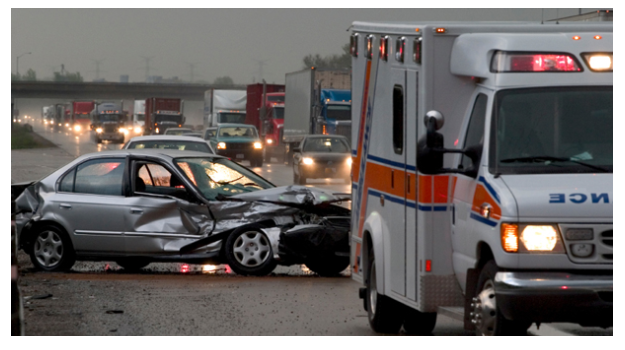Combating Drunk Driving: Strategies, Initiatives, and Collective Responsibility
Introduction:
Drunk driving remains a persistent and preventable menace on our roads, claiming lives and causing devastating consequences. Addressing this public safety issue requires a multifaceted approach, combining legal measures, technological innovations, and public awareness campaigns. This comprehensive guide explores various strategies and initiatives aimed at fighting drunk driving, emphasizing the importance of collective responsibility in creating safer roads for all.
The Scope of the Problem:
Drunk driving, also known as driving under the influence (DUI) or driving while intoxicated (DWI), continues to be a major factor in road accidents and fatalities worldwide. The impairment caused by alcohol or drugs significantly increases the risk of accidents, injuries, and loss of life. Understanding the scope of the problem is crucial in formulating effective strategies to combat drunk driving.
Statistics and Impact:
Global and national statistics on drunk driving accidents paint a sobering picture of the issue’s severity. The economic and social costs, including medical expenses, legal proceedings, and the emotional toll on families affected by drunk driving incidents, underscore the urgent need for comprehensive solutions.
Legal Consequences:
Legal consequences for drunk driving vary by jurisdiction but often include fines, license suspension, mandatory education programs, and, in severe cases, imprisonment. Despite these penalties, the persistence of drunk driving incidents highlights the need for proactive measures to prevent individuals from getting behind the wheel while impaired.
Strategies for Combating Drunk Driving:
Law Enforcement Measures:
Strengthening law enforcement efforts is a foundational strategy in the fight against drunk driving. This includes regular sobriety checkpoints, increased patrols during peak times, and stringent enforcement of existing DUI laws. Visible and consistent enforcement acts as a deterrent, discouraging individuals from driving under the influence.
Ignition Interlock Devices:
Mandating the use of ignition interlock devices (IIDs) for individuals with DUI convictions is an effective measure. IIDs require drivers to pass a breathalyzer test before starting their vehicles, preventing those with elevated blood alcohol levels from driving.
Blood Alcohol Concentration (BAC) Limits:
Establishing and enforcing legal limits for blood alcohol concentration (BAC) is crucial. Lowering permissible BAC levels and implementing zero-tolerance policies for specific groups, such as novice drivers or commercial drivers, can contribute to reducing drunk driving incidents.
Public Awareness Campaigns:
Public education campaigns play a pivotal role in changing attitudes and behaviors towards drunk driving. These campaigns should emphasize the potentially lethal consequences of impaired driving, the legal ramifications, and alternative transportation options. Leveraging various media platforms ensures a broad reach and impact.
Community Involvement and Support:
Engaging communities in anti-drunk driving initiatives fosters a sense of collective responsibility. Community-led awareness programs, partnerships with local businesses, and collaboration with schools and youth organizations contribute to creating a culture that discourages impaired driving.
Technological Innovations:
Advancements in technology offer innovative solutions for combating drunk driving. The development of in-vehicle alcohol detection systems, often known as alcohol ignition interlock devices (AIIDs), can prevent intoxicated individuals from operating vehicles. Additionally, ride-sharing apps and services provide convenient alternatives for individuals who may otherwise choose to drive under the influence.
Prevention through Education:
Implementing comprehensive alcohol education programs in schools and communities is crucial for preventing future instances of drunk driving. Education should focus on the dangers of alcohol impairment, responsible drinking habits, and the potential consequences of making poor decisions while under the influence.
Technological Innovations in the Fight Against Drunk Driving:
Alcohol Ignition Interlock Devices (AIIDs):
AIIDs are advanced versions of traditional ignition interlock devices. These systems use cutting-edge technology to accurately measure a driver’s BAC and prevent the vehicle from starting if the level exceeds the legal limit. AIIDs represent a proactive approach to preventing drunk driving incidents.
Smartphone Applications:
Various smartphone applications provide users with convenient alternatives to driving under the influence. Ride-sharing apps, such as Uber and Lyft, offer users the ability to request a safe and sober ride with the touch of a button, reducing reliance on personal vehicles after consuming alcohol.
Vehicle Safety Technologies:
Automakers are incorporating advanced safety technologies into vehicles to prevent impaired driving. Features such as lane departure warnings, automatic emergency braking, and driver monitoring systems contribute to overall road safety and may reduce the likelihood of accidents caused by impairment.
Connected Vehicle Technologies:
The advent of connected vehicle technologies allows vehicles to communicate with each other and with infrastructure. These technologies have the potential to enhance road safety by providing real-time information about potential hazards, including erratic driving behaviors associated with impairment.
The Role of Legislation and Policy:
Toughening DUI Laws:
Legislators play a pivotal role in the fight against drunk driving by continually reassessing and toughening DUI laws. This includes revisiting legal BAC limits, increasing penalties for offenders, and closing loopholes that may allow some individuals to evade consequences.
Supporting Research and Development:
Government agencies should invest in research and development initiatives aimed at creating and implementing advanced technologies to combat drunk driving. Funding research on effective prevention strategies, supporting technological innovations, and collaborating with private industries can lead to meaningful advancements in this field.
International Collaboration:
Drunk driving is a global issue that requires international collaboration. Governments and organizations should work together to share best practices, exchange information on successful initiatives, and collectively address challenges associated with combating impaired driving.
Conclusion:
Fighting drunk driving demands a comprehensive and collaborative effort from various sectors of society. By combining law enforcement measures, technological innovations, public awareness campaigns, and supportive legislation, communities can create an environment that prioritizes road safety and discourages impaired driving. Ultimately, the goal is to save lives, prevent injuries, and cultivate a culture of responsibility and accountability where individuals actively choose alternatives to getting behind the wheel while under the influence. Embracing these strategies collectively, we can work towards a future where the dangers of drunk driving are minimized, and our roads become safer for everyone.

